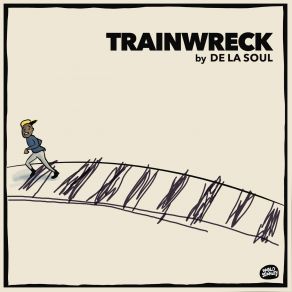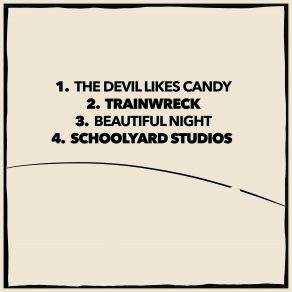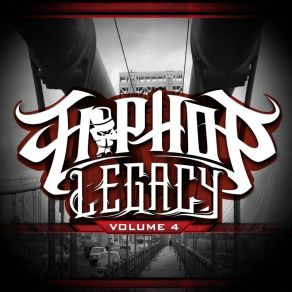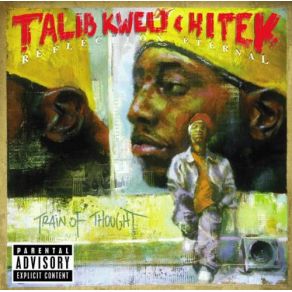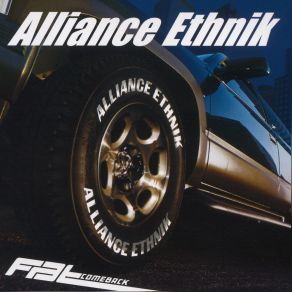De La Soul
Wikimp3 information about the music of De La Soul. On our website we have 38 albums and 70 collections of artist De La Soul. You can find useful information and download songs of this artist. We also know that De La Soul represents Hip Hop/R&B genres.
Biography
[Edit]At the time of its 1989 release, De La Soul's debut album, 3 Feet High and Rising, was hailed as the future of hip-hop. With its colorful, neo-psychedelic collage of samples and styles, plus the Long Island trio's low-key, clever rhymes and goofy humor, the album sounded like nothing else in hip-hop. Where most of their contemporaries drew directly from old-school rap, funk, or Public Enemy's dense sonic barrage, De La Soul were gentler and more eclectic, taking in not only funk and soul, but also pop, jazz, reggae, and psychedelia. Though their style initially earned both critical raves and strong sales, De La Soul found it hard to sustain their commercial momentum in the '90s as their alternative rap was sidetracked by the popularity of considerably harder-edged gangsta rap.
De La Soul formed while the trio members — Posdnuos (born Kelvin Mercer, August 17, 1969), Trugoy the Dove (born David Jude Jolicoeur, September 21, 1968), and Pasemaster Mase (born Vincent Lamont Mason Jr., March 27, 1970) — were attending high school in the late '80s. The stage names of all of the members derived from in-jokes: Posdnuos was an inversion of Mercer's DJ name, Sound-Sop; Trugoy was an inversion of Jolicoeur's favorite food, yogurt. De La Soul's demo tape, "Plug Tunin'," came to the attention of Prince Paul, the leader and producer of the New York rap outfit Stetsasonic. Prince Paul played the tape to several colleagues and helped the trio land a contract with Tommy Boy Records.
Prince Paul produced De La Soul's debut album, 3 Feet High and Rising, which was released in the spring of 1989. Several critics and observers labeled the group as a neo-hippie band because the record praised peace and love as well as proclaiming the dawning of "the D.A.I.S.Y. age" (Da Inner Sound, Y'all). Though the trio was uncomfortable with the hippie label, there was no denying that the humor and eclecticism presented an alternative to the hardcore rap that dominated hip-hop. De La Soul quickly were perceived as the leaders of a contingent of New York-based alternative rappers that also included A Tribe Called Quest, Queen Latifah, the Jungle Brothers, and Monie Love; all of these artists dubbed themselves the Native Tongues posse.
For a while, it looked as if De La Soul and the Native Tongues posse would eclipse hardcore hip-hop in terms of popularity. "Me, Myself and I" became a Top 40 pop hit in the U.S. (number one R&B), while the album reached number 24 (number one R&B) and went gold. At the end of the year, 3 Feet High and Rising topped many best-of-the-year lists, including The Village Voice's. With all of the acclaim came some unwanted attention, most notably in the form of a lawsuit by the Turtles. De La Soul had sampled the Turtles' "You Showed Me" and layered it with a French lesson on a track on 3 Feet High called "Transmitting Live from Mars," without getting the permission of the '60s pop group. The Turtles won the case, and the decision not only had substantial impact on De La Soul, but on rap in general. Following the suit, all samples had to be legally cleared before an album could be released. Not only did this have the end result of rap reverting back to instrumentation, thereby altering how the artists worked, it also meant that several albums in the pipeline had to be delayed in order for samples to clear. One of those was De La Soul's second album, De La Soul Is Dead.
When De La Soul Is Dead was finally released in the spring of 1991, it received decidedly mixed reviews, and its darker, more introspective tone didn't attract as big an audience as its lighter predecessor. The album peaked at number 26 pop on the U.S. charts, number 24 R&B, and spawned only one minor hit, the number 22 R&B single "Ring Ring Ring (Ha Ha Hey)." De La Soul worked hard on their third album, finally releasing the record in late 1993. The result, entitled Buhloone Mindstate, was harder and funkier than either of its predecessors, yet it didn't succumb to gangsta rap. Though it received strong reviews, the album quickly fell off the charts after peaking at number 40, and only "Breakadawn" broke the R&B Top 40. The same fate greeted the trio's fourth album, Stakes Is High. Released in the summer of 1996, the record was well reviewed, yet it didn't find a large audience and quickly disappeared from the charts.
Four years later, De La Soul initiated what promised to be a three-album series with the release of Art Official Intelligence: Mosaic Thump; though reviews were mixed, it was greeted warmly by record buyers, debuting in the Top Ten. The second title in the series, AOI: Bionix, even featured a video hit with "Baby Phat," but Tommy Boy and the trio decided to end their relationship soon after. De La Soul subsequently signed their AOI label to Sanctuary Urban (run by Beyoncé's father, Mathew Knowles) and released The Grind Date in October 2004. Two years later the group issued Impossible Mission: TV Series, Pt. 1, a collection of new and previously unreleased material.
Title: Royalty Capes (Single)
Artist: De La Soul
Genre: Electronica, Tech House, Hip Hop/R&B, Rap, Death Metal
Title: FIRST SERVE (2020 Remastered Version)
Artist: De La Soul, Dj Khalid Music, Dj Chokolate
Genre: Hip Hop/R&B, Rap
Title: And The Anonymous Nobody
Artist: De La Soul
Genre: Hip Hop/R&B, Rap, Instrumental, Instrumental
Title: Top Chef Remix - Single
Artist: De La Soul, DJ Supa Dave, Lyes Paparazzi
Genre: Hip Hop/R&B, Rap
Title: Classic Hip-Hop
Artist: Xzibit, Leaders Of The New School, Keith Murray, The Beatnuts, Dead Prez, De La Soul, Artifacts, Bahamadia, Ras Kass, Jeru The Damaja, MAD SKILL, Public Enemy, X Clan, Lords Of The Undergr Pharoahe Monch
Genre: Hip Hop/R&B, Rap
Title: FIRST SERVE (Instrumental version)
Artist: De La Soul, Dj Khalid Music, Dj Chokolate
Genre: Instrumental, Instrumental
Title: Action (Single)
Artist: De La Soul
Genre: Electronica, Tech House, Hip Hop/R&B, Rap, Death Metal
Collections
Title: I Love Music! - Dance & Club Edition Volume 12
Genre: Club/Dance
Title: Deep House Collection Vol. 20 (CD2)
Genre: House, Deep House, Tech House, Club/Dance, Nu Disco
Title: 100 Hits: 80s Pop
Genre: Pop
Title: 100 Hits: Party
Title: 100 Hits: R&B
Genre: Hip Hop/R&B
Title: Lyricist Lounge, Volume One
Genre: Hip Hop/R&B
Title: De Maxx Long Player 6
Genre: Electronica
Title: Latest And Greatest RnB Summer (CD2)
Genre: Hip Hop/R&B, Soul, Pop, Funk
Title: Massive Rhythm And Blues
Genre: Hip Hop/R&B
Title: German Top 20 DBC (Deutsche Black Charts) (20-07-2015)
Genre: Hip Hop/R&B, Rap
Title: Hip Hop The Evolution (CD1)
Genre: Rap
Title: Hip Hop The Evolution (CD2)
Genre: Rap
Title: Latest & Greatest R&B Party (CD2)
Genre: Hip Hop/R&B, Rap, Soul, Jazz, Funk
Title: American Ultra (Unofficial Soundtrack)
Genre: Theatre/Soundtrack
Title: RNB Compliment (CD2)
Genre: Hip Hop/R&B, Rap
Title: Ministry Of Sound Anthems Hip Hop II (CD2)
Genre: Hip Hop/R&B
Title: Die Hit-Giganten - Soul Hits (CD2)
Genre: Hip Hop/R&B, Soul, Pop
Title: Tracks All Time Hip-Hop (CD3)
Genre: Hip Hop/R&B, Rap
Title: Hip-Hop Legacy Vol. 4
Genre: Electronica, Tech House, Hip Hop/R&B, Death Metal
Title: Hip-Hop Legacy Vol. 2
Genre: Electronica, Tech House, Hip Hop/R&B, Death Metal
Title: 100 Hits - 80s Pop - 2016 (CD1)
Genre: Pop
Title: RnB & Pop Islands Hits (CD2)
Genre: Hip Hop/R&B, Rap, Soul, Reggae, Trap
Title: Latest & Greatest R&B Hits (CD2)
Genre: Hip Hop/R&B
Title: DMC Re-Grooved Remixes Vol. 3 (The Bootleg Sessions)
Genre: Hip Hop/R&B, Soul, Reggae, Pop, Funk
Title: DJ Rukus Remix Pack [March 2017] (CD2)
Genre: House, Hip Hop/R&B, Pop
Title: Road Trip Ultimate Collection 5CD (CD3)
Genre: Reggae, Pop, New Romantic, Ska
Title: Hip-Hop History: The Collection 4CD (CD1)
Genre: Hip Hop/R&B, Rap, Gospel, Funk
Title: Hip-Hop History: The Collection 4CD (CD2)
Genre: Hip Hop/R&B, Rap, Gospel, Funk
Title: Soul Classics - The Ultimate Collection (CD2)
Genre: Hip Hop/R&B, Soul, Gospel, Punk Rock, Reggae, World Music, Funk, Folk
Title: R&B Anthems - The Ultimate Collection (CD2)
Genre: Hip Hop/R&B, Soul, Jazz, Funk, Indie
Title: R&B Anthems - The Ultimate Collection (CD3)
Genre: Hip Hop/R&B, Soul, Jazz, Funk, Indie
Title: Die Hit Giganten Best Of Funk & Soul 2017 (CD2)
Genre: Hip Hop/R&B, Soul, Jazz, Funk, Smooth Jazz
Title: New Music Friday UK From Spotify (02-03-2018) (CD1)
Genre: Downtempo, Hip Hop/R&B, Rap, Country, Synth Pop, Alternative, Indie, Trap
Title: Hip Hop The Golden Era 1979-1999 (CD1)
Genre: Hip Hop/R&B, Soul, Funk
Title: Select Mix Old School Essentials Vol. 45
Genre: Hip Hop/R&B, Rap, Funk
Title: DMC Dance Anthems 80's Collection Volume 1
Genre: Freestyle Music, Eurodance, House, Hip Hop/R&B, New Wave, Disco, Synth Pop
Title: Dance Anthems 80's Collection Vol. 1
Genre: Hip Hop/R&B, Dancefloor, Disco, Pop, Dance Pop
Title: Totality 80s Rhythm Nations (CD1)
Genre: Post Disco, Electro, Hip Hop/R&B, New Wave, Disco, Pop, Funk
Title: Totality 80s Rhythm Nations (CD2)
Genre: Post Disco, Electro, Hip Hop/R&B, New Wave, Disco, Pop, Funk
Title: Mastermix DJ Beats Vol. 77
Genre: Hip Hop/R&B, Soul, Disco, Pop
Title: 100 Greatest Hip-Hop 2019 (CD2)
Genre: Hip Hop/R&B, Rap, Pop
Title: DMC DJ Promo 247 (CD1)
Genre: Garage, House, Hip Hop/R&B, Rap, Soul, Jazz, Punk, Dancefloor, Reggae, Dance Pop, Indie
Title: Select Mix Old School Essentials Vol. 47
Genre: Hip Hop/R&B, Rap, Theatre/Soundtrack, Funk
Title: The Daisy Age
Genre: Hip Hop/R&B
Title: DMC Essential Hits 178
Genre: House, Hip Hop/R&B, Rock, Dancefloor, Eurodisco, Dance Pop, Theatre/Soundtrack, Indie, Classical
Title: 100 Greatest 00s Hip-Hop 2020 (CD2)
Genre: Hip Hop/R&B, Rap, Reggae
Title: Quarantini Time (CD2)
Genre: Hip Hop/R&B, Soul, Pop
Title: 100% Best Rock Pop Live (CD2)
Genre: Hip Hop/R&B, Rock, Punk Rock, Pop, Pop Rock, Alternative, Songwriter/Lyricist
Title: New Music Releases Week 25 Of Songs 2020 (CD1)
Genre: Electronica, Hip Hop/R&B, Dancefloor, Latin, Pop, Dance Pop
Title: Bekjons Collections Vol. 18
Genre: Electronica, Dancefloor, Pop, Dance Pop
Title: Greatest Ever R&B + Hip Hop (CD2)
Genre: Hip Hop/R&B, Rap
Title: Greatest Ever R&B + Hip Hop (CD3)
Genre: Hip Hop/R&B, Rap
Title: New Music Releases Week 44 Of 2020 (CD2)
Genre: Electronica, Hip Hop/R&B, Dancefloor, Latin, Pop, Dance Pop
Title: 245 DJ Loaded Musical Majesty (CD3)
Genre: Electronica, House, Electro, Dancehall, Nu Disco, Funk, Dubstep, Trap
Title: 200 DJ Loaded Beautiful Feelings (CD4)
Genre: Dancehall, Reggaeton, World Music, Nu Disco, Synth Pop
Title: Select Mix Old School Essentials Vol. 49
Genre: Hip Hop/R&B, Rap, Dancehall, Funk
Title: Select Mix Quick Trax Vol. 19
Genre: Freestyle Music, Post Disco, Soul, New Wave, Dancehall, World Music, Disco, Alternative
Title: Smithsonian Anthology Of Hip-Hop And Rap (CD5)
Genre: Hip Hop/R&B
Title: Alternative Rap Essentials (CD1)
Genre: Hip Hop/R&B, Rap, Pop
Title: Hi-Res Masters - 2000s (CD1)
Featuring albums
Title: Bridging the Gap
Artist: Black Eyed Peas
Genre: Hip Hop/R&B, Rap, Rock, Punk Rock, Dancefloor, Dance Pop, Alternative
Title: The Isley Brothers - Taken to the Next Phase (Reconstructions)
Artist: The Isley Brothers
Genre: Hip Hop/R&B, Rap, Soul, Rock, Funk
Title: White People (Instrumental Version)
Artist: Handsome Boy Modeling School
Genre: Electronica, Hip Hop/R&B, Rap, Rock, Punk Rock
Title: The Best of DJ Honda, Vol. 2
Artist: DJ Honda
Genre: Electronica, Hip Hop/R&B, Rap, Dancefloor, Dance Pop
Title: All Hail The Queen (US Release)
Artist: Queen Latifah
Genre: Electronica, House, Hip Hop/R&B, Rap, Dancefloor
Title: Las Vegas: Original Television Soundtrack
Artist: Various
Genre: Electronica, Hip Hop/R&B, Rock, Dancefloor, Pop, Dance Pop, Theatre/Soundtrack
Title: Uncommon Classics, Volume 1 + 2 (Mixed By Dj Risky Bizness)
Artist: Common
Genre: Hip Hop/R&B
Title: Decksandrumsandrockandroll
Artist: Propellerheads
Genre: Breakbeat , Downtempo, Trip Hop, Electronica, Hip Hop/R&B
Title: Deep In Progress
Genre: House, Hip Hop/R&B, Soul, Jazz, Punk Rock, Dancefloor, Dance Pop
Title: The Mix Of The Century
Artist: Arjan Rietvink
Genre: Euro House, Electro, Soul, Disco, Synth Pop


